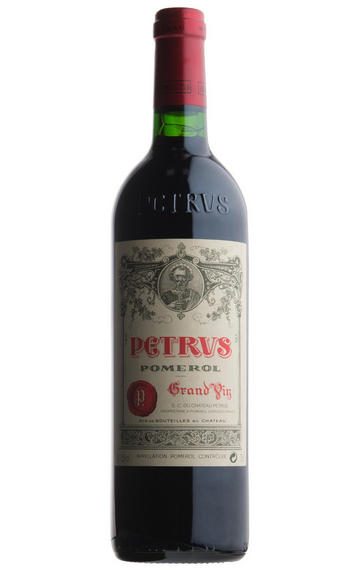
2010 Petrus, Pomerol, Bordeaux
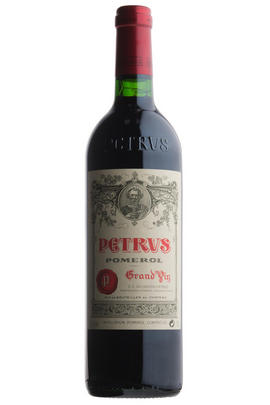
Critics reviews
The 2010 Petrus has an extraordinary bouquet, ineffably complex with brambly red fruit, sous-bois, dried blood and wild mint aromas that unfurl magically from the glass. The palate is medium-bodied with supple tannins, fleshy and generous, yet amazingly controlled with such tension and grace on the silky smooth finish. This is a fantastic Petrus, one of the greatest in recent years.
Drink 2025 - 2060
Neal Martin, Vinous.com (April 2020)
14.5% alcohol; 100% merlot; 50% new oak.
Good, fully saturated ruby. The complex, brooding nose offers aromas of ripe plum, blackberry jam, violet, cocoa syrup and Oriental spices; though deep and opulent, the nose is much less forward and exotic than either the 2008 or 2009. The palate offers outstanding intensity to the blackcurrant, cocoa and spice flavours, but this very densely packed Petrus manages to remain light on its feet. Saturates the entire mouth, finishing with very creamy tannins and a great lift. A big wine that reminded me of the 1975.
Jean-Claude Berrouet liked this comparison, noting that both vintages produced berries with the same thick skins, and wines with similar acidity levels, but pointed out that the 2010 is less accessible than the 1975 was at the same stage of development. There was also more alcohol in the 2010. Wine lovers with very deep pockets might want to take note that the '09 (the wine of that vintage, in my book) and '10 Petrus are this property's best back-to-back duo in some time.
Ian D'Agata, Vinous.com (May 2011)
Deep garnet coloured, the 2010 Petrus opens a little broody, with gently crushed rocks, a cast iron pan and fragrant earth notions giving way to core plum preserves, baked blueberries, liquorice and Black Forest cake plus wafts of pencil shavings, garrigue and violets. Full-bodied, the palate is beautifully poised with a firm line of exquisitely ripe, fine-grained tannins and fantastic freshness bolstering the generous fruit, finishing very long and very, very classy. Collectors fortunate enough to have a few bottles of this vintage are advised to be patient and allow it a further 7-10 years to loosen up and emerge gloriously from this rock-solid structure.
Drink 2027 - 2070
Lisa Perrotti-Brown MW, Wine Advocate (March 2020)
Maybe surprising to see a Pomerol that is so well-built that it is not anywhere near ready even at 10 years old, but this is Pétrus, a place that writes its own rules. The brushed silk exuberance is there but hidden underneath a still-pulsating wall of tannins. You expect this level of concentration in Pauillac, so it is more of a surprise on the Right Bank, but here you are in no doubt that 2010 is an intellectual, demanding vintage that needs to be given time. You need to look to 2009 Pétrus to begin enjoying any time soon - this is structured, full of dark fruits, structured, savagely built, out to impress.
Drink 2025 - 2050
Jane Anson, Decanter.com (January 2020)
The harvest at Petrus took place between September 27 and October 12, and the 2010 finished at 14.1% natural alcohol, which is slightly lower than the 2009's 14.5%. The 2010 reminds me somewhat of the pre-1975 vintages of Petrus, a monster-in-the-making, with loads of mulberry, coffee, licorice and black cherry notes with an overlay of enormous amounts of glycerin and depth. Stunningly rich, full-bodied and more tannic and classic than the 2009, this is an awesome Petrus, but probably needs to be forgotten for 8-10 years. It should last at least another 50 or more.
Someone told me recently that Petrus had a second wine, so I asked Olivier Berrouet, their young, talented administrator, whether that was true, and he flatly denied it, so if any Asian wine buyers are running across second wines of Petrus in Hong Kong or on mainland China, be warned – they are not genuine. Proprietor Jean Moueix, who I believe is in his late twenties, has taken over for his father, Jean-Francois, who has largely retired, and the younger Moueix has really pushed quality even higher at this renowned estate. Anyone visiting Pomerol would have undoubtedly noticed the renovations at Petrus, as it was once one of the most modest and humble buildings in the appellation.
Moreover, I suspect that multi-millionaire/billionaire collectors will have about 50 years to debate over which vintage of Petrus turns out better, the 2009 or 2010. In a perfect world, most people would love to have a few bottles of each, or at least the opportunity to taste them once in a while, as they have become more of a myth than something real, but these wines do, in fact, exist!
Drink 2021 - 2071
Robert M. Parker, Jr., Wine Advocate (February 2013)
Jean-François rather than Christian Moueix was managing this property – since 2009.
Very lustrous dark crimson. Intense meaty, tarry nose. Much fleshier than Le Pin. Sweet and spicy on top, savoury and rather well constructed underneath. This should have a particularly long drinking window. Not especially opulent for Petrus.
Drink 2018 - 2048
Jancis Robinson MW, JancisRobinson.com (February 2020)
This a Petrus with extraordinary balance and depth. It shows such elegance in the nose with complexity of black olives, dark fruits, and flowers. The palate is full and ultra-velvety yet there is a cashmere quality to the texture. It takes your breath away. There's almost a Burgundian quality in the mouthfeel meaning it takes you deep into the soil and captivates your attention. Greatest modern vintage of Petrus ever?
Try after 2018
James Suckling, JamesSuckling.com (February 2013)
The youthful yet outrageously talented Olivier Berrouet has really made his mark with his second vintage in sole charge. This wine seems more assured than the 2009, with subtle oak integration, a gloriously aromatic nose, spicy red fruits, medium weight tannins and a taut, minerally finish tying the whole package together like a huge silk bow. A wine that favours finesse over extraction. The price will be bonkers, but this is a stunning Pomerol.
Tim Atkin MW, TimAtkin.com (May 2011)
Fully saturated ruby. Knockout aromas of fresh black cherry, blackcurrant, exotic herbs, coffee and menthol, plus a hint of minerality. Juicy, fruit-driven flavours of dark berries and cherry are complicated by cocoa, vanilla and graphite and given laser-like precision by vibrant, harmonious acidity. Manages to be both fleshy and acidic at the same time, demonstrating uncanny depth and complexity of flavour. This strikes me as deeper and longer than the already magnificent 2009: it may well turn out to be the wine of the vintage. These two wines from Petrus make for an outstanding, back-to-back pair of vintages.
Stephen Tanzer, Vinous.com (July 2013)
About this WINE
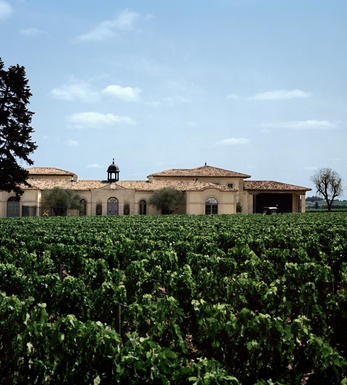
Petrus
Petrus is a wine estate in Pomerol on the Right Bank of Bordeaux. It is among the most celebrated and recognisable wines in the world.
While the estate can trace its history to at least 1837, it flew relatively under the radar until around the 20th century. Madame Loubat, who became the sole owner in 1945, felt that the estate was truly special, and her efforts were instrumental in establishing Petrus on the world stage. She also appointed Jean-Pierre Moueix as the exclusive agent; he and his sons Jean-François and Christian were key in building the estate’s modern reputation. The Moueix family became majority owners here in 1969. In 2018, they were joined by American-Colombian Alejandro Santo Domingo, who purchased a 20% stake.
Petrus is located atop the Pomerol plateau. Most of its vines sit on a so-called “buttonhole” of blue clay soil, known as smectite. This soil’s ability to retain water is a huge benefit in the Pomerol appellation, where drought is a known issue. The vineyard is planted mostly to Merlot.
The estate is run today by winemaker Olivier Berrouet, previously of neighbouring Château Cheval Blanc. Olivier joined in 2008, taking over from his father, Jean-Claude, who had produced 44 vintages of Petrus in his time.
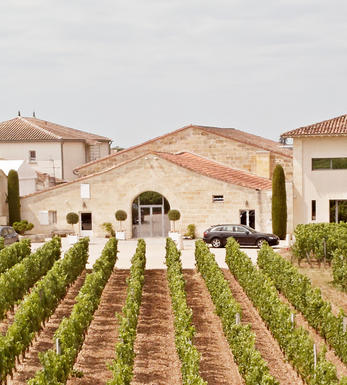
Pomerol
Pomerol is the smallest of Bordeaux's major appellations, with about 150 producers and approximately 740 hectares of vineyards. It is home to many bijou domaines, many of which produce little more than 1,000 cases per annum.
Both the topography and architecture of the region is unremarkable, but the style of the wines is most individual. The finest vineyards are planted on a seam of rich clay which extends across the gently-elevated plateau of Pomerol, which runs from the north-eastern boundary of St Emilion. On the sides of the plateau, the soil becomes sandier and the wines lighter.
There is one satellite region to the immediate north, Lalande-de-Pomerol whose wines are stylistically very similar, if sometimes lacking the finesse of its neighbour. There has never been a classification of Pomerol wines.
Recommended Châteaux : Ch. Pétrus, Vieux Ch. Certan, Le Pin, Ch. L’Eglise-Clinet, Ch. La Conseillante, Ch. L’Evangile, Ch. Lafleur, Trotanoy, Ch. Nenin, Ch. Beauregard, Ch. Feytit-Clinet, Le Gay.
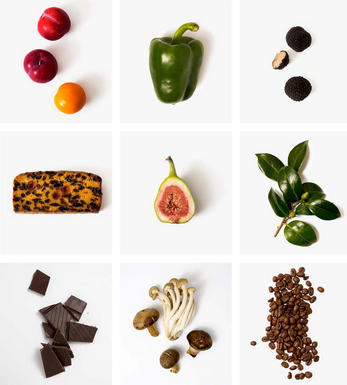
Merlot
The most widely planted grape in Bordeaux and a grape that has been on a relentless expansion drive throughout the world in the last decade. Merlot is adaptable to most soils and is relatively simple to cultivate. It is a vigorous naturally high yielding grape that requires savage pruning - over-cropped Merlot-based wines are dilute and bland. It is also vital to pick at optimum ripeness as Merlot can quickly lose its varietal characteristics if harvested overripe.
In St.Emilion and Pomerol it withstands the moist clay rich soils far better than Cabernet grapes, and at it best produces opulently rich, plummy clarets with succulent fruitcake-like nuances. Le Pin, Pétrus and Clinet are examples of hedonistically rich Merlot wines at their very best. It also plays a key supporting role in filling out the middle palate of the Cabernet-dominated wines of the Médoc and Graves.
Merlot is now grown in virtually all wine growing countries and is particularly successful in California, Chile and Northern Italy.


Buying options
Add to wishlist
Description
Deep garnet coloured, the 2010 Petrus opens a little broody, with gently crushed rocks, a cast iron pan and fragrant earth notions giving way to core plum preserves, baked blueberries, liquorice and Black Forest cake plus wafts of pencil shavings, garrigue and violets. Full-bodied, the palate is beautifully poised with a firm line of exquisitely ripe, fine-grained tannins and fantastic freshness bolstering the generous fruit, finishing very long and very, very classy. Collectors fortunate enough to have a few bottles of this vintage are advised to be patient and allow it a further 7-10 years to loosen up and emerge gloriously from this rock-solid structure.
Drink 2027 - 2070
Lisa Perrotti-Brown MW, Wine Advocate (March 2020)
wine at a glance
Delivery and quality guarantee